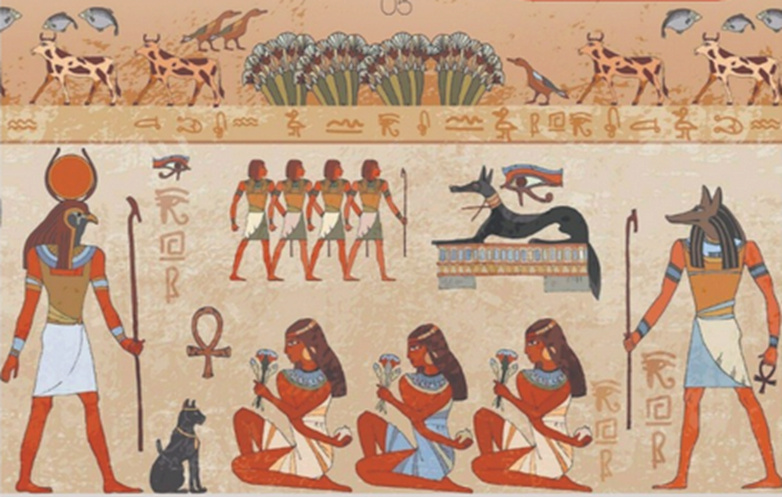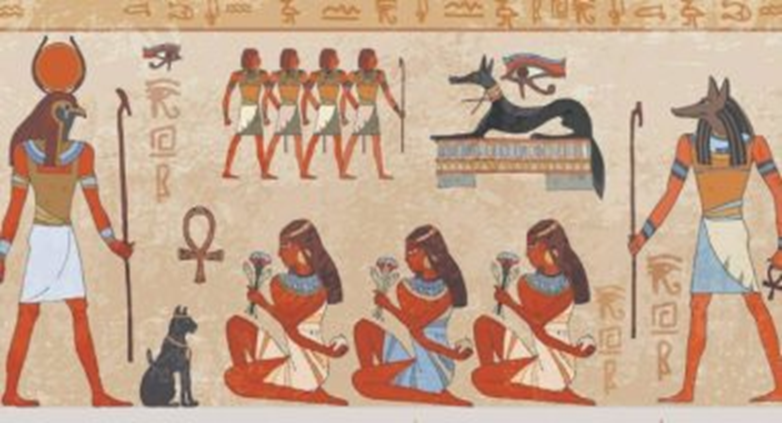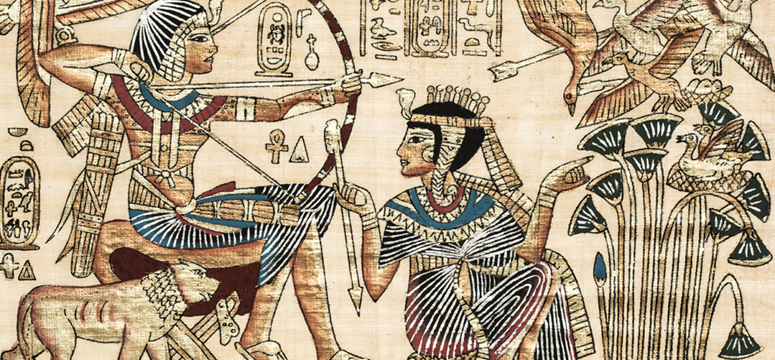Ancient Egyptian celebrations

Egyptian celebrations... the life of our ancient ancestors between religious and agricultural holidays... the unification of the two countries is an official holiday... Opet and New Year are an opportunity for joy... and the Nile flood is sacred
Egyptians love celebrations, for several reasons, including the agricultural environment and diverse crops, and because of the religious character that characterized the Egyptian people from an early time. These days, Egyptians and Arabs celebrate Eid al-Fitr, which came a week after the glorious Resurrection Day, which reflects the state of the Egyptian people and their holidays. Multiple, so what about the history of ancient celebrations:
In an important report written by Archaeological Inspector Mahmoud Muhammad Mandarawi, he reviews a number of holidays and celebrations in ancient Egypt, dividing them into a number of sections that we will review together:
Holidays in Egypt are divided into:

1- Official holidays:
It was held throughout all of Egypt, and the king celebrated it with the people. He went out to his people and distributed gifts and presents to his people. Dancing and singing parties and other celebrations were held at that time. The most important of these holidays was the Festival of the Unification of the Upper and Lower Egypt, which was started by King Menes and then became an official holiday for Egypt. It is held every year.
2- Local holidays
These holidays are specific to a specific region or city in which they celebrate a specific event that pertains to the region or city only. This is something that we still celebrate in our present time, even if the occasions have changed. We have come to rely on modern events that occurred in contemporary history.
3- Special holidays:
These are popular holidays related to a specific group or craft sect, or a specific occasion specific to a specific group or place, and are limited to the group only and not to the rest of the residents of the city or region, such as fishermen celebrating their catch, carpenters celebrating their working season, and farmers celebrating their harvest date.
4- Religious holidays:
There are many religious holidays in Pharaonic Egypt that are specific to the gods or the opening of a temple, including:
A- Who is God’s Day?
This feast is held in the first month of the harvest season because this god is associated with fertility. During the feast, the king releases a group of birds towards the east, south, west and north as a symbol of renewing his power.
B- Feast of Opet
It is the feast of the transition of Amun from his temple in Karnak to his temple in Luxor. This feast was known through the scenes of the Luxor Temple dating back to the era of King Tutankhamun and Horemheb, and through it the god Amun was moving from Karnak to Luxor and then back to Karnak, and the celebrations begin. From the Temple of Karnak, where the king offers sacrifices (meat, flowers, fruit, birds, milk, perfumes), and also fumigates and sprinkles water in front of the boat of Amun, which is called (Wasrhat), and in front of the boats of “Mut” and “Khonsu.”
C- The Feast of the Beautiful Meeting:
It is the holiday in which the goddess Hathor would go from the Temple of Dendera every year to spend 15 days in the Temple of Edfu with her husband Horus. This trip was a happy occasion shared by the people, and Hathor would leave her temple 5 days before the full moon and on the edge of the river would offer her sacrifices.
D- New Year’s Day:
This holiday begins on the night before the New Year, when a group of senior priests, led by the high priest who replaces the king, goes to perform the rituals. They are four main priests in the temple and the priest associated with Dendera, who is called the music player.
E - The Feast of Amun in the Valley:
On this holiday, the king, after wearing his luxurious clothes, goes to search for Amun in his temple, in order to invite him to visit (the Valley of the Dead) in western Thebes. The crossing of the river was done in a boat led by the gods, and this holiday lasted 11 days during the reign of Tuthmosis III and 24 days during the reign of Thutmose III. 29th and 27th Dynasties during the rule of Ramesses III.
The Palermo tablet mentioned to us the feasts of the gods, such as the feasts of Horus, Sokar, Min, Anubis, and Seshat, and through the lists of feasts found in the temples of Kom Ombo, Edfu, Esna, and Dendera, we can trace the feasts of some of the gods, such as Hathor and Sekhmet.

5-Agricultural holidays:
Since Egypt is a first-class agricultural country, agricultural holidays have become widespread, such as the Feast of the Fulfillment of the Nile, the Feast of the Harvest, and the Feast of Plowing the Land.
The first agricultural holidays begin with the coming of the flood, which was attributed to the tears of the goddess Isis over her husband, “Osiris,” the god of agriculture, greenery, and resurrection, who at the end of the Pharaonic era came to control the flooding of the Nile. Therefore, this day was one of the feasts of the goddess “Isis.”
Then comes the Feast of the Fulfillment of the Nile, when the flood rises to an appropriate height, so as not to cause the earth to become thirsty or to drown. Joy spreads throughout the country, and all the people go out to celebrate this event, going to the temples of the local gods in general and the god of the Nile flood in particular, singing songs about the virtue of the flood waters. The god of the Nile flood

The book “The Nile in the Era of the Pharaohs and the Arabs” by Antoine Zakry says that there is no doubt that all celebrations of the festivals held annually for the Nile’s flood were like a religious duty that people respected as they respected the Nile, and the usual decorations were held for public holidays.
Another holiday is the Agricultural New Year, which is the Coptic New Year or Nowruz. It was a national holiday in Egypt, and its celebration continued until the Middle Ages.
Another holiday was the Spring Solstice, which is currently Sham El Nessim, and it was a holiday of music, dancing, and eating salted fish, white goose, and green onions.
As for the Feast of the Winter Solstice, it was similar to the Feast of the Epiphany in our current time, and it came on the occasion of plowing the land and scattering the seeds.
6-Funeral holidays:
As for funeral feasts, they are still inherited in Upper Egypt to this day, including the fortieth anniversary and the anniversary, and also the going out of women, men, and children to the cemeteries to visit their dead relatives, carrying with them the offerings that were made from barley and oils, and this legacy still exists.
The ancient Egyptians had holidays associated with specific occasions, the most important of which was the completion of the construction of the royal cemetery. The texts and scenes of the Old Kingdom depict for us the holidays that the kings held on the occasion of the completion of the construction of their pyramids. We find people dancing, singing songs, and holding tables, and everyone is happy with the end of this national project that all Egyptians rallied around.

7- Victory celebrations
The Egyptians also celebrated the feasts of their victories over their enemies. The senior army commanders in the era of the beginning of the Eighteenth Dynasty left us scenes and texts on the walls of their tombs depicting for us how they celebrated the anniversary of their decisive victory over the Hyksos and the distribution of gifts and medals to them by the Pharaoh on their feasts, as well as the gifts that were given to them. It was granted to them, whether agricultural land, livestock, etc.
If we contemplate all these holidays, we would think - and some of the suspicion is true - that the ancient Egyptians did not stop celebrating one day a year, which reveals a spirit that loves life and seeks joy.
The holidays in ancient Egypt, recorded by drawings in temples and inscriptions in tombs, presented an important aspect of civilization.
Source: websites

